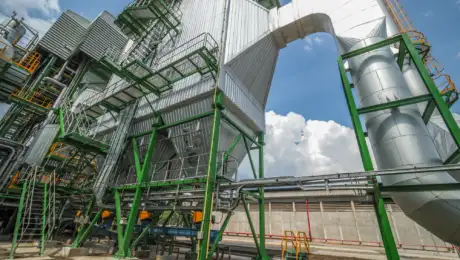
IHA is crucial for ensuring equipment suitability in explosive settings
Explosive atmospheres usually occur when flammable substances such as vapours, gases, mists, or dust combine with air and an ignition source. Friction, hot surfaces, and other ignition sources can trigger an explosion, putting the safety of employees and operations at risk. In such environments, focus on the safety of the equipment and protective systems used for operational purposes must be prioritised to mitigate potential risk explosion.
Equipment and protective systems used in explosive atmospheres should be assessed through Ignition Hazard Assessment (IHA). This assessment ensures compliance with essential health and safety requirements. It evaluates their ability to prevent ignition and protect against the consequences of an explosion.
Gexcon's IHA solutions
Ignition Hazard Assessment (IHA) under ATEX Directive 2014/34/EU
This step involves comprehensive testing of all equipment and protective systems used in explosive atmospheres, as per the ATEX Product Directive. It ensures that they meet safety standards for preventing ignition sources.
Drop and Mechanical Impact Test (ATEX Directive 2014/34/EU)
This test evaluates the durability of the equipment and its ability to withstand external mechanical impacts, safeguarding it against potential damage.
Declaration of Conformity for Category 2 & 3 EX-Equipment
For EX-zones 1/21 and 2/22 respectively, this step involves providing a formal declaration confirming that the equipment complies with safety regulations.
ATEX Certification Testing for Category 1 Equipment in Zone 0/20
We conduct ATEX testing for manufacturers, either in the pre-testing or design testing phase, to ensure compliance before proceeding with certification from the notified body. This step is critical for equipment intended for use in Zone 0/20.
Electrostatic Properties Test (ISO 80079-36:2016)
This test is designed to determine the electrostatic properties of non-electrical (mechanical) equipment used in explosive atmospheres. It ensures that the equipment can effectively prevent electrostatic discharge, minimizing potential ignition risks.
Testing relating to ATEX conformity
Ignition Hazard Assessment FAQs
-
1What is the purpose of an Ignition Hazard Assessment?The test(s) aims to fulfil the requirement to receive ATEX certification.
ATEX (ATmosphere EXplosibles) is a set of European Union regulations established to protect employees from explosion risk in areas with an explosive atmosphere.
Equipment and protective systems to be used in potentially explosive atmospheres must fulfil the essential health and safety requirements described in the ATEX Directive 2014/34/EU before they can be placed on the European Market. More specifically, this implies that equipment and protective systems shall be assessed according to their ability to prevent it from becoming an ignition source and their ability to protect against the consequences of explosions. -
2How steps do Gexcon take to conduct the Ignition Hazard Assessment test?
- Identifying Pertinent Ignition Sources: The first step involves identifying ignition sources associated with the equipment.
- Evaluating Each Identified Ignition Source: We thoroughly assess each of these identified ignition sources.
- Reviewing Existing Safety Measures: This step involves a comprehensive evaluation of the type and specifics of safety measures currently in place.
- Assigning Equipment Category Rating: We determine the category rating for the tested equipment based on its safety features and capabilities.
- Ensuring Compliance with Applicable Standards: Our assessment ensures that the equipment conforms to the requirements outlined in relevant safety standards.
- Generating Comprehensive Reports: A detailed report is then provided, summarizing the assessment and findings.
These steps outline our process for ensuring equipment safety and regulatory compliance.







